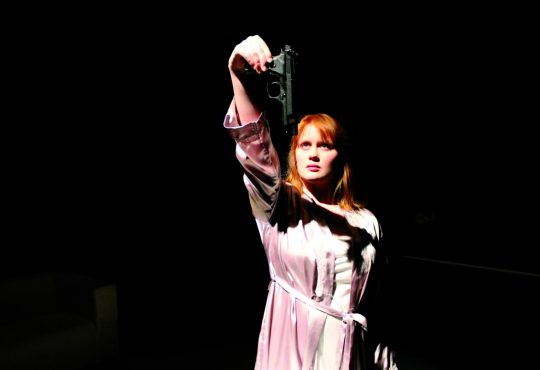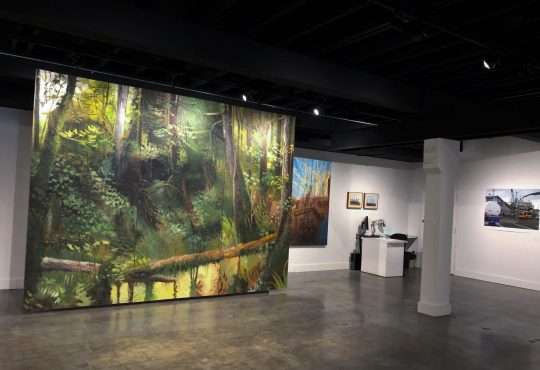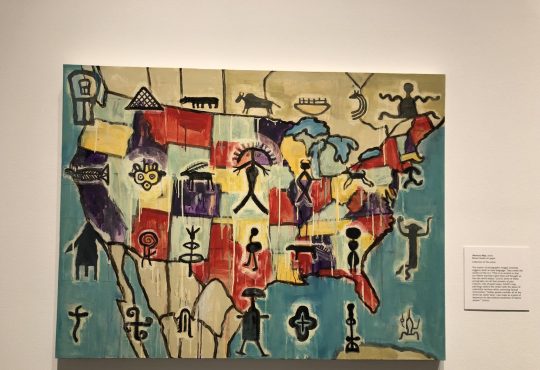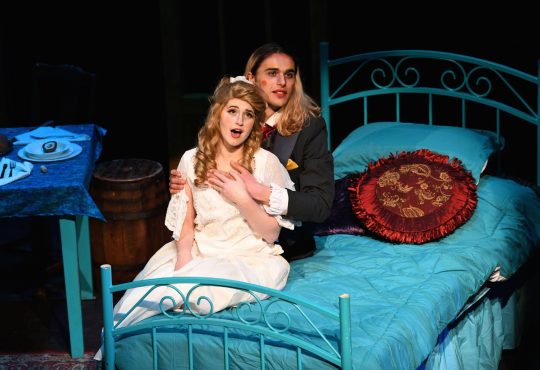In the Feb. 20 issue of the The Trail, an article about the theatre exhibit in the Collin’s memorial library used the word dramaturgy. Many of you have probably never even heard of this word in your life. It means the theory and practice of dramatic composition.
If you want to experience the true meaning of dramaturgy, all you have to do is wander through the theatre exhibit in the library, and get lost in its bold and captivatingly detailed displays of the theatrical experience. For thespians and non-actors alike, the exhibit is a fascinating walk down memory lane of Puget Sound’s theatrical history and a spectacular showcase of the craft of theatre production.
In the exhibit, there is a word chart in bright bold colors that describes dramaturgy with words like meaning, innovation and content.
A few of the display cases in the exhibit show used journals of directors, revealing just how much goes into the casting and production process. In one of the cases, a page about the rehearsal plan for the play In the Next Room performed in the fall of 2013, has been ripped directly out of the director’s notebook, and still has the director’s chaotic notes littering the margins of the page. With arrows scribbled in different directions and half the words on the page circled, it gives a direct insight into just how much work goes into the art of producing the perfect scene.
Of course, a scene could not be complete without the perfect wardrobe to go along with it. The exhibit in the library shows a few of the original costumes used in plays, such as a flamboyant dress designed for the 2012 play Metamorphoses. The dress’s design is head turning; it is made of fishnets, seashells, and is brought together by a flashy metal centerpiece. It is just one of the three extravagant dresses on display in the exhibit.
Equally as detailed and beautiful as the wardrobe on display are the actual sketched designs for the costumes. The meticulous detail used in the sketches is alluring, plus the designs are almost more outrageous than the costumes themselves because they are unlimited by reality. Wardrobe sketches can be seen for plays like A Midsummer Night’s Dream,
which features both old gothic and modern clothing designs, and Tom Stoppard’s Rough Crossing, which features clothing from the 1930s. The costume designs are offset by pictures of how the designs actually turned out and show the actors wearing the costumes on stage.
The actual stage design is another matter explored by the exhibit. In a few of the glass cases, there are precisely detailed shoe box-sized displays of the stage and set design for plays such as Romeo and Juliet and Metamorphosis. The displays are placed beside pictures that show how the actual set design turned out in comparison to what the set designer had planned.
Though these displays are visually remarkable, one display in particular captures the true history of Puget Sound’s theatre production. The exhibit has a timeline of all the plays performed at Puget Sound starting from 1945 and continuing until current day. The display even contains some playbills from early on, printed in black and white.
Next time you are walking through the library to study, stop by the Theatre Arts exhibit to discover the world of theatre production.





